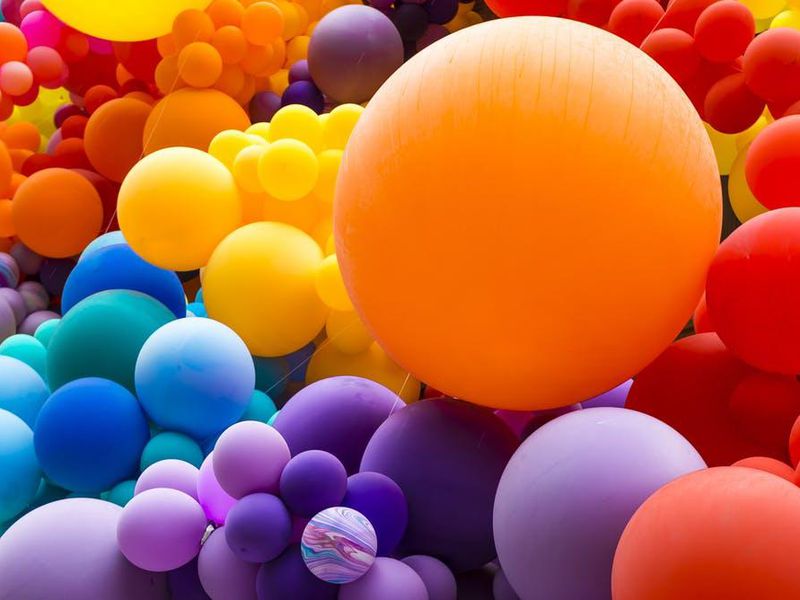Table of Contents
Color and Poetry
There are many entrancing color poems – everything from Walter de la Mare’s magical Silver to Gelett Burgess’s foolish The Purple Cow. Check out some of these:
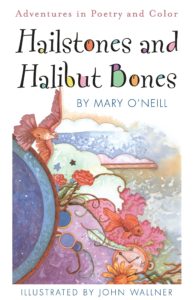
|
Mary O’Neill’s Hailstones and Halibut Bones (Doubleday, 1990) is a great resource for potential color-poets: a wonderful illustrated collection of poems about every color of the rainbow (and then some). (“The purple feeling/Is rather put-out./The purple look is a/Definite pout./But the purple sound/Is the loveliest thing./It’s a violet opening/In the spring.”) For ages 4-8. |
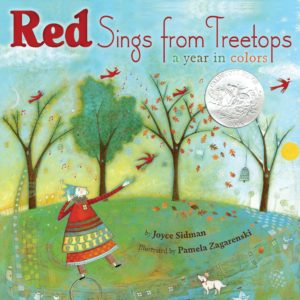
|
Joyce Sidman’s Red Sings From Treetops (Houghton Mifflin Harcourt, 2009) is an enchantingly illustrated collection of color poems throughout the seasons. (“Yellow slips goldfinches/their spring jackets.”) For ages 4-8. |
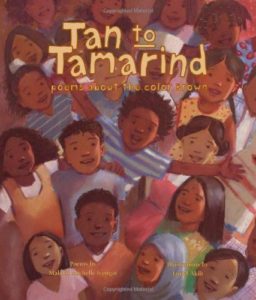
|
Malathi Michelle Iyengar’s Tan to Tamarind: Poems About the Color Brown (Children’s Book Press, 2009) is a collection of fifteen poems about the many shades of brown, from tan and beige to honey, cinnamon, and topaz. Illustrations show kids in a wide variety of skin colors. For ages 4-8. |
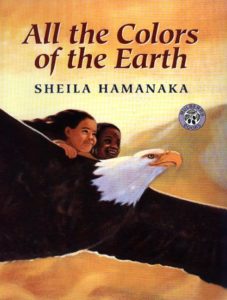
|
Sheila Hamanaka’s All the Colors of the Earth (Mulberry Books, 1999) is a celebration of all the different colors of children everywhere: the brown of “roaring bears,” the “tinkling pinks of tiny seashells,” “amber and ivory and ginger.” For ages 4-8. |
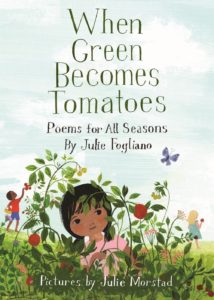 |
By Julie Fogliano, When Green Becomes Tomatoes (Roaring Brook Press, 2015), is an illustrated collection of poems through the seasons (“just like a tiny blue hello/a crocus blooming/in the snow.”) For ages 4-8. |
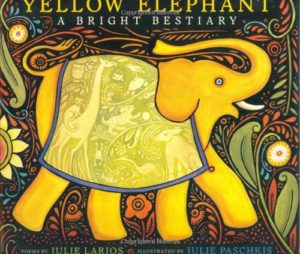 |
By Julie Larios, Yellow Elephant (Harcourt, 2006) pairs brilliantly colored animal pictures – yellow elephant, red donkey, white owl, blue turtle – with short poems. For ages 4-8. |
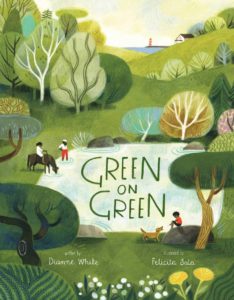 |
By Dianne White, Green on Green (Beach Lane Books, 2020) is a colorful rhyming tour through the seasons beginning with the yellows of spring. For ages 4-8. |
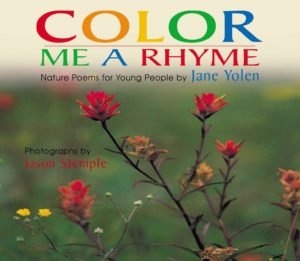
|
Jane Yolen’s Color Me a Rhyme (Wordsong, 2003) is a photo-illustrated collection of nature poems for kids. Each page includes a long list of synonyms for the featured color, printed in color, and a color quotation. For ages 8-12. |
| Christina Rosetti’s poem Color begins “What is pink? A rose is pink/By a fountain’s brink” – and ends “What is orange? Why, an orange/Just an orange!” | |
| Marge Piercy’s Color Passing Through Us is a wonderful collection of color images: “Purple as tulips in May,” “Yellow as a goat’s wise and wicked eyes,” “Green as mint jelly.” | |
| Color from Emily Dickinson: Nature rarer uses yellow. | |
| What color are vowels? See Vowels by French poet Arthur Rimbaud. |
Color and Science
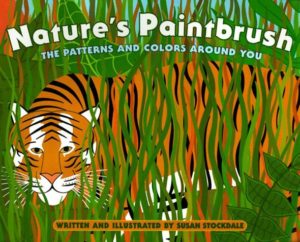
|
Nature’s Paintbrush by Susan Stockdale (Simon & Schuster, 1999) is an appealing picture-book explanation of color and pattern in nature. Kids discover the reasons for the tiger’s orange and black stripes, the toucan’s gaudy beak, and poison-dart frog’s brilliant spots. For ages 3-8. |
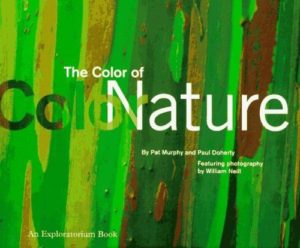
|
Pat Murphy and Paul Doherty’s The Color of Nature (Chronicle Books, 1996) expands upon this theme for older readers: the book is a 150-page assemblage of fascinating information about color, illustrated with photographs. Readers learn why flamingos are pink, why grass is green, why wildflowers are brightly colored, and how to tell the age of a desert from the color of its sand. For ages 10 and up. |
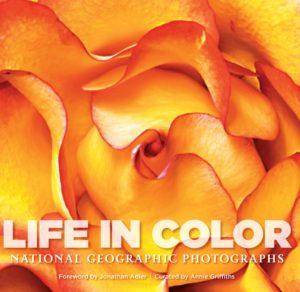
|
National Geographic’s hefty Life in Color (National Geographic, 2014) is a gorgeous collection of photographs arranged in color-themed chapters. Each includes an essay on the symbolism, meaning, and characteristics of the featured color. |
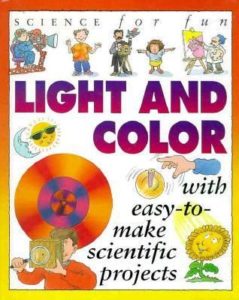 |
Gary Gibson’s Light and Color (Copper Beech Books, 1995) includes an assortment of color-related hands-on projects and experiments – among them mixing colors and splitting white light into the colors of the spectrum. For ages 7 and up. |
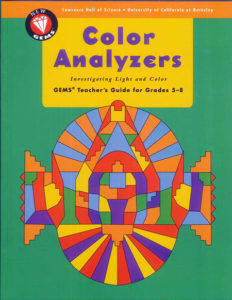 |
From the Lawrence Hall of Science GEMS program, Color Analyzers is an activity guide in which kids explore many aspects of light and color. For ages 10 and up. |
| From the Smithsonian, The World Has Millions of Colors: Why Do We Only Name a Few? Good question. (Invent your own color names?) | |
| From the San Francisco Exploratorium’s Perception: Light, Color, and Seeing has many cool demonstrations and experiments on light and color. | |
| Learn about Color and Dye Chemistry while making a tie-dyed T-shirt. (You’ll need to buy materials and T-shirt.) | |
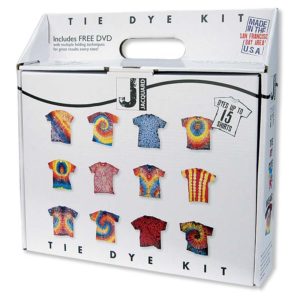 |
See this Jacquard Tie Dye Kit, which has enough materials for making up to fifteen tie-dyed shirts. (About $20 from Amazon.) |
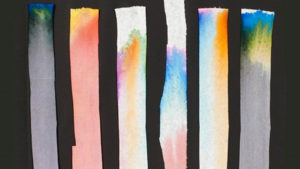 |
In Color Burst, kids use paper chromatography to separate dyes into their individual components. (Find out what’s in green.) |
| From Vimeo, The History and Science of Color Temperature is a series of short videos (plus a quiz). Learn about color and temperature using examples of everything from Spike Lee’s “Do the Right Thing” to the Coen Brothers’ “Fargo.” | |
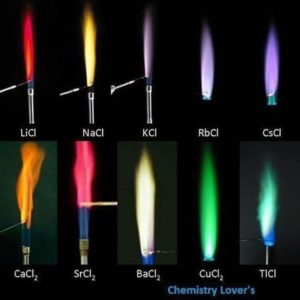 |
With the Rainbow Fire kit can explore flame photometry and learn how astronomers, using color, determine the atomic composition of distant stars. This is incredibly cool, but involves chemicals and matches and requires adult supervision. |
| From the Sciences Education Foundation, Chromatics: The Science of Color is a downloadable 100+-page unit covering such topics as “Surfing the Electromagnetic Spectrum,” “Fireworks and Flame Photometry,” “Why Plants are Green,” and “Chemiluminescence.” |
Rainbows
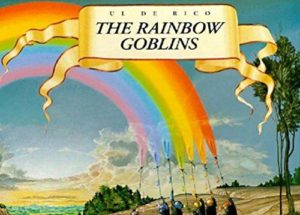
|
Ul de Rico’s gorgeously illustrated The Rainbow Goblins (Thames & Hudson, 1978) is the wonderful tale of seven goblins (Red, Orange, Yellow, Green, Blue, Indigo, and Violet) who spend their time lassoing rainbows and eating all the colors. There’s a happy ending for the rainbow, but the story explains why now the rainbow never touches the earth. For ages 5 and up. |
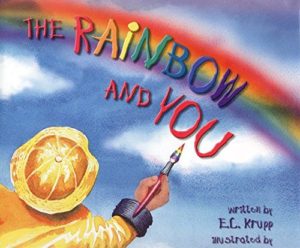
|
E.C. Krupp’s The Rainbow and You (HarperCollins, 2000) – narrated by Roy G. Biv himself, wearing spiffy rainbow-striped socks – explains the science, history, and lore of the rainbow, plus shows kids how to make a rainbow of their own with the garden hose. For ages 6-12. |
| From SciJinks, What Causes a Rainbow? is an illustrated explanation targeted at kids. | |
| From PBS, The Science of Rainbows is a friendly account on YouTube. | |
| Learn about How Rainbows Work from How Stuff Works, and view a rainbow image gallery. | |
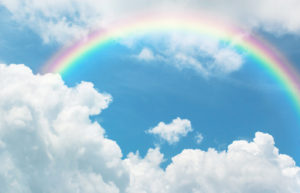 |
Science of Rainbows for Kids covers the colors of the rainbow, why rainbows are arc-shaped, primary and secondary rainbows, and more, with photos and animations. |
| Make Your Own Rainbow with a glass of water. (And a sunny day.) | |
| How to Make a Rainbow in a Glass is a gorgeous experiment in which kids learn about density. Also see Steve Spangler’s impressive Seven Layer Density Column. |
Color Math
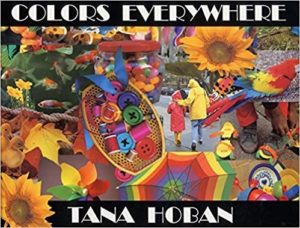
|
Tana Hoban’s Colors Everywhere (Greenwillow, 1995) – a collection of glowing color photos of everything from striped umbrellas to gaudy birds – includes bar graphs on each page showing the proportions of the different colors present. For ages 2-6. |
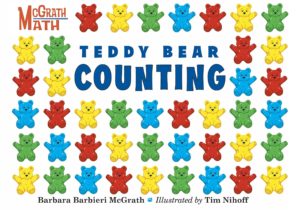
|
Barbara Barbieri McGrath’s Teddy Bear Counting (Charlesbridge, 2010) and Teddy Bear Patterns (Charlesbridge, 2013) both use brightly colored teddy bears to teach colors, counting, shapes, sequencing, skip counting, and more. For ages 3-7. |
| Pair these with hands-on counting bears. | |
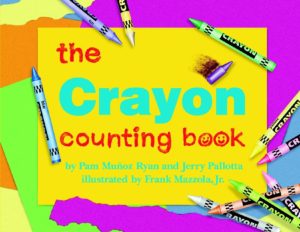
|
In The Crayon Counting Book by Pam Munoz Ryan and Jerry Pallotta (Charlesbridge, 1996), kids not only learn to count to 24 by 2’s, but discover a whole new world of bizarre colors, among them iguana, purple hairstreak, and emerald boa. (Go on. Invent color names of your own.) For ages 3-8. |
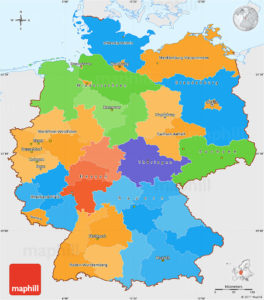 |
Color-minded mathematicians might enjoy investigating the famous “Four-Color Map Problem,” a mathematical mind-boggler that states that four colors – just four – are enough to color any map such that no two regions with a common border will be colored with the same color. (Don’t believe it? Get a ready-to-be-colored outline map and try it.)
See The Four Colour Theorem, an illustrated explanation from the University of Cambridge. It’s more complicated than it first sounds. |
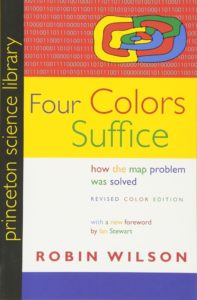 |
Robin Wilson’s Four Colors Suffice: How the Map Problem Was Solved (Princeton University Press, 2013) tells you everything you possibly want to know about the four-color map problem, with numerous anecdotes. (The whole thing started as an April Fool’s joke.) For teens and adults. |
| Hexadecimal numbers are used on web pages to set colors. Experiment with Hexadecimal Colors (there are 16 million of them) here. |
